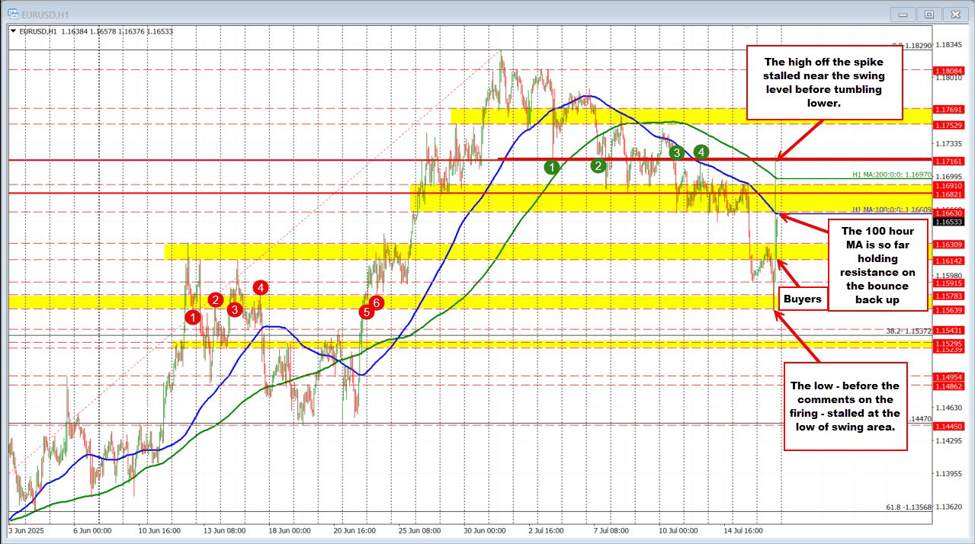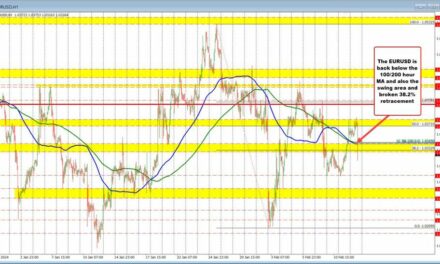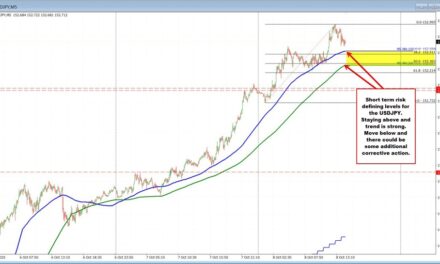The USD started the trading day moving higher at the start of the US session extending the gains seen yesterday. However after reports that Trump was set to fire German Powell those gains were quickly reversed with the dollar moving sharply lower against all the major currency pairs.
Then the comments from Trump that he was not going to fire Powell sent the dollar racing the other way once again. The price is now settled near the mid range of the US session more or less.
Looking at some of the major currencies, what did the volatility do the bias, risk and targets.
EURUSD technicals
EURUSD: The EURUSD surged sharply higher after reports surfaced of Powell’s potential firing, breaking above multiple key technical levels. The initial rally drove the pair back above the 100-hour moving average at 1.1661 and into a swing area between 1.1663 and 1.1691—a zone that also acted as support/resistance back in April and November 2021.
The bullish momentum continued, briefly piercing the 200-hour moving average at 1.1697 and a swing level at 1.1716, before peaking at 1.17208.
However, the move quickly reversed. The price tumbled all the way down to 1.1614, the lower boundary of another key swing zone between 1.1614 and 1.16309. Since then, EURUSD has bounced modestly, but remains below the 100-hour moving average, keeping short-term sellers in control despite the volatility.
To flip the bias back higher, the pair would need to:
Without that, to increase the selling momentum, a move below 1.1614 would reinforce downside momentum and shift focus toward lower support levels once again.
USDJPY technicals
USDJPY: The USDJPY started the day above a swing are between 148.56 and 148.72. The rumors about the firing sent the pair sharply lower, and back below the swing area, the high from June at 148.012, and back below the broken 38.2% retracement of the move down from the 2025 high back in January at 147.135.
However, the price bounced back higher off of the denial, and although the process traded above and below the June high since then, it has started to settle below that level at 148.019. If the price can stay below that level, the sellers can restart the downside. Getting back below the 38.2% retracement would be a negative bias shift once again.
Conversely, if the price can get and stay above 148.019, the buyers would take back more control.
GBPUSD: In early U.S. trading, GBPUSD pushed into a swing area between 1.33607 and 1.3378. The initial spike following the Powell firing reports sent the pair sharply higher, breaking above both the 100-hour moving average and the 50% midpoint of the range from the May low—both at 1.34638.
However, the move lacked follow-through. As the firing news was walked back, momentum faded and the price reversed lower. The pair has since found support near 1.3414, with buyers leaning against that level.
A break below 1.3414 would open the door toward the 61.8% retracement at 1.3387, followed by a retest of the lower swing zone at 1.33607.
On the upside, holding above 1.3414 keeps the focus on resistance at 1.34638 (100-hour MA and 50% retracement). A sustained move back above that key level would give buyers renewed confidence and shift the short-term bias more bullish.
ForexLive.com
is evolving into
investingLive.com, a new destination for intelligent market updates and smarter
decision-making for investors and traders alike.






